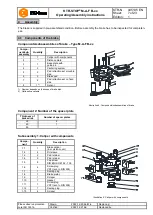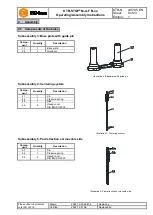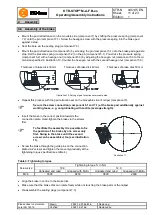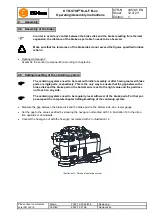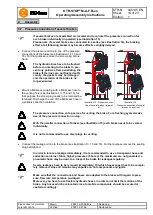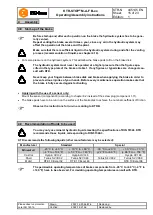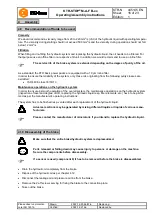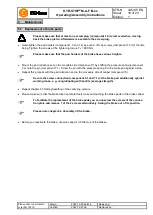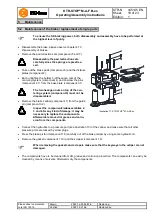
KTR-STOP
®
M-A-F B-xx
Operating/Assembly instructions
KTR-N
Sheet:
Edition:
445145 EN
14 of 23
1
Please observe protection
note ISO 16016.
Drawn:
2022-12-20 Ka/Wie
Replacing:
Verified:
2022-12-21 Ka
Replaced by:
If several brakes are assembled we recommend to connect the pressure connection for
each brake individually (in parallel) (see illustration 15).
Please note, if several brakes are connected in a series (see illustration 16), the braking
effect of all following brakes may become effective slightly delayed.
•
Connect the pressure oil line to one of the pressure
connections of the brake (see illustration 14, 15 and
16). For that purpose remove the screw plug before-
hand.
•
Mount a Minimess coupling with a Minimess hose to
the venting hole (see illustration 13, 15 and 16), for
that purpose the screw plug needs to be removed be-
forehand. Discharge the end of the Minimess hose in
a suitable collection container.
!
The hydraulic lines have to be flushed
before connecting to the brake to pre-
vent any particles from penetrating the
brake. If the lines are not flushed suffi-
ciently, the gaskets may be damaged
and the operation of the brake is no
longer ensured.
Illustration 15: Pressure connec-
tion of several brakes (in paral-
lel)
Illustration 16:
Pressure connection of several
brakes (in a series)
!
The pressure connection on top serves for venting the brake. For a flushing system make
use of the pressure connection on top.
!
With the parallel connection of brakes (see illustration 15) each brake needs to be vented
individually.
!
It is not recommended to use steel plugs for venting.
•
Connect the leakage oil line to the brake (see illustration 13, 15 and 16). For that purpose remove the sealing
plug beforehand.
In order to locate a leakage immediately, it is recommended to use a transparent hose and
collection container. Since higher pressures (5 bars at the maximum) are not generated, a
pneumatic hose may be used, too. Inspect the brake for leakages regularly.
!
Severe leakages have to be removed immediately. Oil which has escaped has to be comple-
tely removed, since oil remains may vaporize on hot components and ignite.
Make sure that the connections and hoses are adapted to the brakes with regard to pres-
sure, flow rate, temperature and liquid.
Moreover, you have to use flexible hydraulic hoses in order to not limit the motions of the
brake. Any hoses which are located close to mobile components should be secured or
coated accordingly.
4
Assembly
4.7 Pressure connection of several brakes







